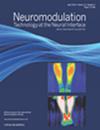外脉冲发生器经皮外周神经刺激引线植入后引线尖端骨折和保留的发生率:两代引线植入物456例的多中心比较分析
IF 3.5
3区 医学
Q2 CLINICAL NEUROLOGY
引用次数: 0
摘要
目的:外周神经刺激器(PNS)引线植入后,引线骨折和保留是可能发生的潜在不良事件,尽管最近PNS硬件的技术进步已经实现了避免这种风险。我们的目的是量化目前临时PNS导联骨折/滞留的发生率,并将其与临时PNS导联硬件设计改变前的发生率进行比较。材料和方法:在2018年6月1日至2024年8月1日期间,对植入临时PNS系统(SPR©Therapeutics, Cleveland, OH)的患者进行了一项多中心回顾性观察研究。如果患者接受了临时经皮PNS系统植入并计划在60天内去除铅,则纳入其中。如果拔除时铅尖的状态不明确(完整还是骨折),或者患者在60天治疗期间无意中拔除铅,则排除患者。本研究的主要目的是1)量化去除临时经皮PNS后铅潴留的发生率,2)比较原始铅潴留设计(1.0版本)和修订铅潴留设计(2.0版本)的铅潴留率。次要目的包括基于以下协变量的铅潴留率分析:体重指数(BMI)、患者年龄、铅放置位置或铅植入时间。结果:在研究时间内,337例患者共植入了456根导联。337例患者中,40.4% (n = 136)植入1.0版本铅,59.6% (n = 201)植入2.0版本铅。总体而言,7.5%的植入导联(34/456)被保留,影响10.1%的患者。在194个植入1.0版本的导联中,13.4%的导联(n = 26)保留,而262个植入2.0版本的导联中,3.1% (n = 8)保留(p < 0.001)。这些结果表明,每个患者的导联保留率从1.0版本导联的19.1%降低到2.0版本导联的4.0%。协变量包括BMI、患者年龄、铅植入位置或铅植入持续时间不能预测铅潴留率。结论:临时PNS导联的滞留和断裂仍然普遍存在,影响了7.5%的植入导联,尽管我们也观察到在实施修订导联2.0版本硬件设计后,发生率显著降低(3.1%对13.4%)。本文章由计算机程序翻译,如有差异,请以英文原文为准。
Incidence of Lead Tip Fracture and Retention After Percutaneous Lead Implantation for Peripheral Nerve Stimulation With an External Pulse Generator: A Multicenter Comparative Analysis of 456 Lead Implants Across Two Lead Hardware Generations
Objectives
Lead fracture and retention are potential adverse events that can occur after peripheral nerve stimulator (PNS) lead implantation, although recent technologic advancements in PNS hardware have been implemented to avert this risk. We aim to quantify the current incidence of temporary PNS lead fracture/retention and compare this with rates before changes in lead hardware design of temporary PNS.
Materials and Methods
A multicenter, retrospective observational study was conducted for patients implanted with a temporary PNS system (SPR© Therapeutics, Cleveland, OH) between June 1, 2018 and August 1, 2024. Patients were included if they underwent a temporary percutaneous PNS system implantation with planned lead removal at 60 days. Patients were excluded if there was ambiguity regarding the status of the lead tip at time of removal (intact vs fractured) or if there was inadvertent lead removal by the patient during the 60-day treatment. The primary objectives of this study were 1) to quantify the incidence of lead retention with removal of temporary percutaneous PNS and 2) to compare the rates of lead retention in the original lead design (version 1.0) and the revised lead design (version 2.0). Secondary objectives included analysis of lead retention rates based on the following covariates: body mass index (BMI), patient age, location of lead placement, or duration of lead implant.
Results
Within the studied timeframe, 337 patients were implanted with a total of 456 leads. Of 337 patients, 40.4% (n = 136) were implanted with lead version 1.0, and 59.6% (n = 201) were implanted with lead version 2.0. Overall, 7.5% of implanted leads (34/456) were retained, affecting 10.1% of patients. Of 194 implanted version 1.0 leads, 13.4% of leads (n = 26) were retained, whereas of 262 version 2.0 leads, 3.1% (n = 8) were retained (p < 0.001). These results showed a reduction in retained leads per patient from 19.1% with lead version 1.0 to 4.0% with revised lead version 2.0. Covariates including BMI, patient age, location of lead placement, or duration of lead implant did not predict lead retention rates.
Conclusions
Retention and fracture of temporary PNS leads remain prevalent, affecting 7.5% of all implanted leads, although we also observed a significant decrease in rates (3.1% vs 13.4%) with implementation of the revised lead version 2.0 hardware design.
求助全文
通过发布文献求助,成功后即可免费获取论文全文。
去求助
来源期刊

Neuromodulation
医学-临床神经学
CiteScore
6.40
自引率
3.60%
发文量
978
审稿时长
54 days
期刊介绍:
Neuromodulation: Technology at the Neural Interface is the preeminent journal in the area of neuromodulation, providing our readership with the state of the art clinical, translational, and basic science research in the field. For clinicians, engineers, scientists and members of the biotechnology industry alike, Neuromodulation provides timely and rigorously peer-reviewed articles on the technology, science, and clinical application of devices that interface with the nervous system to treat disease and improve function.
 求助内容:
求助内容: 应助结果提醒方式:
应助结果提醒方式:


